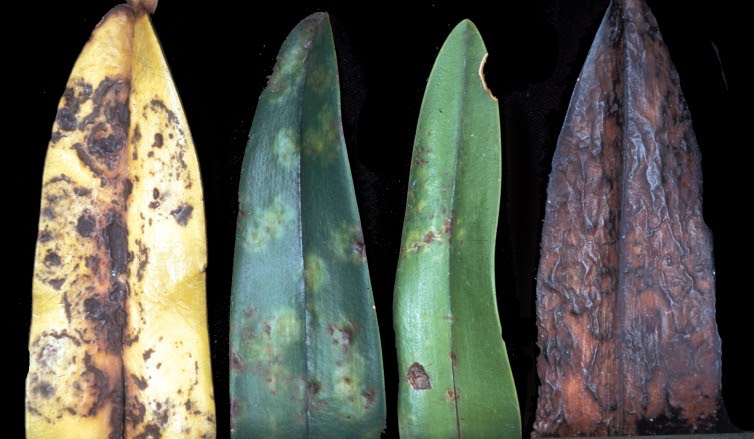Viruses: A basic description
You might be familiar with the word “virus,” whether you’ve heard it from news reports, a diagnosis at the doctor’s office, or even in science class. But what exactly is a virus? In this resource collection, we will dig into the question “What is a virus, anyway?” to help reveal a basic understanding of virology, and how these microscopic units can impact all life on earth.
All Life Exists In a Cloud of Viruses
Picture the lead tip of a sharpened pencil, which is about 1mm in diameter. Seems small, right? Well, now imagine being able to fit 500,000,000 (that is a half BILLION) individual particles on this surface — this is the size and scale of viruses. Viruses are everywhere. You cannot see a virus with the naked eye, nor can you see a virus with a light microscope. Because viruses are so small — even smaller than bacteria — scientists need to use an electron microscope (EM) to see viruses. EMs work by shooting a beam of electrons at a biological specimen in order to see what it looks like. Yet, despite their submicroscopic size, there are so many viruses on our planet that their biomass is 3x that of the biomass of humans! (Bar-On, Phillips, & Milo, 2018)
Viruses are considered parasitic symbionts, meaning that they only exist by engaging in a harmful relationship with a host organism. Since viruses do not possess the necessary cellular machines to make copies of their own genes, they can only persist and expand their population by “hijacking” the normal functions of a host cell. In fact, some scientists even nickname viruses “pirates of the cell.”
What kind of host cells do viruses infect? Well, when it comes to host cells, viruses do not discriminate! There are viruses that infect plants, animals, fungi, and even bacteria. Often, a particular strain of virus can only infect a specific type of host. For example, the Tobacco Mosaic Virus (TMV) can infect approximately 125 different species of plants, but does not cause harm in animals. However, there are some viruses that can jump from one type of host to another type of host. When animals spread a virus strain to another type of animal, it is an example of zoonosis. This has happened many times over human history, as was the case for Human Immunodeficiency Virus (HIV) or the now famous SARS-CoV-2.

TMV infection in orchids.
Viruses are everywhere. In fact, one drop of seawater contains no less than 10 million virus particles. Most viruses on our planet are not harmful to humans. However, certain viruses can pose obvious health concerns for virtually all living things. But are viruses themselves living? What are viruses made out of? How do viruses evolve? While we are still learning how viruses function to cause disease (and how we can prevent or even cure these diseases), scientists have made a lot of progress in their understanding of viruses. In this resource collection we will share our best answers to these questions, and provide examples of activities that help connect virology to everyday life.
References
Bar-On, Y., Philips, R., & Milo, R. (2018). The biomass distribution on earth. PNAS, 115, 6506-6511. https://doi.org/10.1073/pnas.1711842115
Knipe, D. M., & Howley, P. M. (Eds.). (2013). Fields virology. Lippincott Williams & Wilkins.









